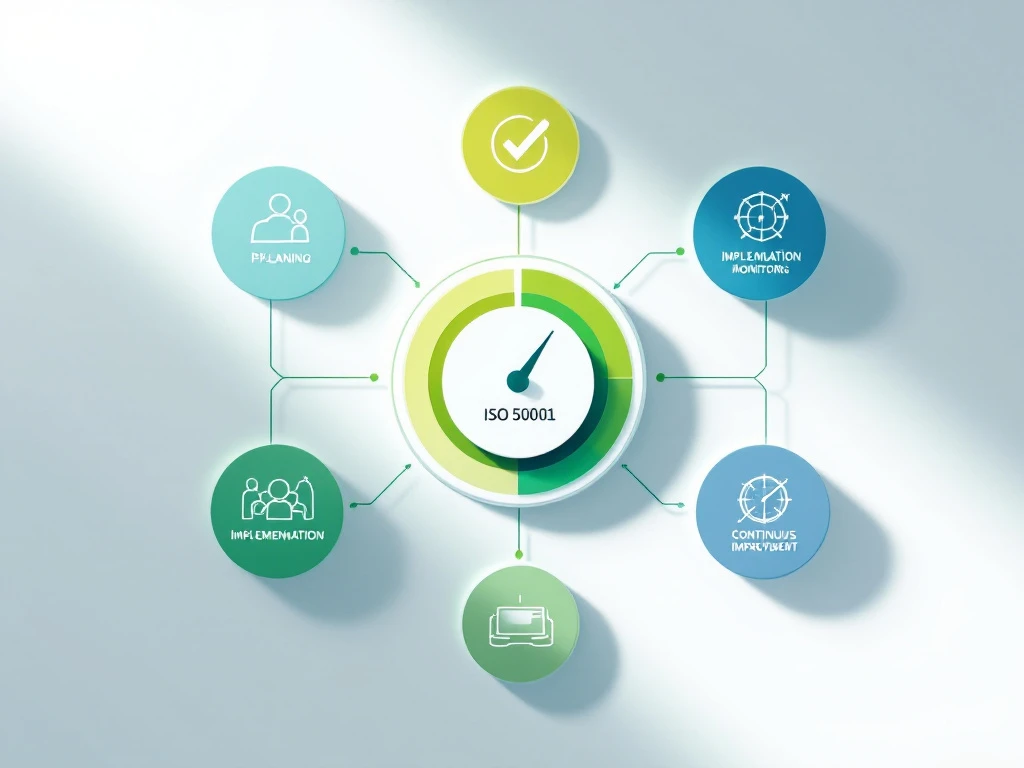
Andres Fellenberg Van der Molen
Director at Green Partner Europe | Hotels Specialist | Sustainability | Energy Efficiency | Circular Economy | Zero Waste | CSR | ESG | SDG

What steps are involved in implementing iso 50001 standards?
Implementing an international energy management standard requires systematic planning, stakeholder engagement, and continuous improvement. The process typically involves securing leadership commitment, conducting an energy review, establishing baselines, developing policies, training staff, implementing energy-saving initiatives, monitoring performance, and pursuing certification. Organizations following this roadmap can achieve enhanced energy efficiency, cost savings, and improved environmental performance.
What is ISO 50001 and why is it important for organizations?
ISO 50001 is an internationally recognized standard that provides a framework for establishing effective energy management systems (EnMS). Developed by the International Organization for Standardization, it enables organizations to improve energy performance through more efficient use, consumption, and tracking of energy resources.
This standard is critical for organizations seeking to reduce operational costs while demonstrating environmental responsibility. By implementing ISO 50001, companies can achieve substantial energy cost savings while simultaneously reducing greenhouse gas emissions and other environmental impacts. Additionally, compliance with this standard offers competitive advantages in markets where sustainable practices are increasingly valued by customers and stakeholders.
Organizations worldwide have embraced this standard as regulatory pressures around sustainability and energy efficiency continue to intensify, particularly in Europe where directives like the Corporate Sustainability Reporting Directive (CSRD) are mandating more transparent environmental performance reporting.
How do you prepare for ISO 50001 implementation?
Preparation is crucial for successful ISO 50001 implementation. The first critical step is securing top management commitment, as their support provides necessary resources, authority, and organizational buy-in. Leadership must demonstrate visible commitment to energy management objectives through active participation and resource allocation.
Next, forming a dedicated energy management team with representatives from key departments ensures comprehensive implementation. This cross-functional team should include members with technical expertise and influence across various operational areas.
Conducting an initial energy review follows, which involves analyzing energy sources, identifying significant energy uses, and evaluating current energy performance. This review establishes where energy is being used and identifies opportunities for improvement.
Finally, establishing baseline energy consumption metrics provides a reference point against which future performance can be measured. This baseline should account for factors that affect energy consumption, such as production volumes, weather conditions, or operating hours.
What are the key components of an ISO 50001 energy management system?
A compliant ISO 50001 energy management system consists of several fundamental elements. At its core is an energy policy, a formal statement from management outlining the organization’s commitment to improving energy performance. This policy establishes a framework for setting and reviewing energy objectives and targets.
Clear objectives and targets are essential, providing specific, measurable goals for energy performance improvement. These should align with the broader energy policy and be reviewed regularly.
Action plans detail how objectives will be achieved, including responsibilities, timelines, methods, and resources required for implementation. These plans transform strategic goals into tactical operations.
Comprehensive documentation requirements include energy review records, management system processes, and operational controls. This documentation ensures consistency and provides evidence of system implementation.
Finally, successful implementation requires integration with existing management systems such as ISO 14001 (Environmental Management) or ISO 9001 (Quality Management), creating a cohesive approach to organizational management rather than isolated systems.
How long does the ISO 50001 implementation process take?
The timeframe for implementing ISO 50001 varies significantly based on several factors. For most organizations, implementation typically spans 6 to 18 months, depending on organizational complexity, existing management systems, and available resources.
Organization size and complexity significantly impact implementation duration. Larger organizations with multiple facilities or complex energy systems naturally require more time to analyze energy uses, establish baselines, and implement changes across operations.
Resource allocation is another determining factor. Organizations with dedicated implementation teams and sufficient financial resources can progress more rapidly than those with limited capacity.
Organizations that have already implemented related management systems like ISO 14001 or ISO 9001 often complete ISO 50001 implementation more quickly due to familiar processes and established documentation frameworks.
What documentation is required for ISO 50001 certification?
ISO 50001 certification requires comprehensive documentation demonstrating systematic energy management. The energy policy document stands as the cornerstone, clearly articulating the organization’s commitment to energy performance improvement.
Documentation defining the scope and boundaries of the energy management system must clearly delineate which activities, facilities, and energy sources fall within the system’s purview.
An energy management manual synthesizing the system’s components provides the framework for implementation, while energy review records document the methodology and findings of energy assessments.
Energy baseline documentation establishes the reference point against which performance improvements are measured, typically covering at least 12 months of energy data.
Energy Performance Indicators (EnPIs) documentation defines the metrics used to quantify energy performance, while management review minutes record leadership’s evaluation of the system’s effectiveness.
The complexity of this documentation highlights why many organizations partner with specialized consultants, like Green Partner, to navigate the certification process effectively.
How is an energy baseline established under ISO 50001?
Establishing an energy baseline under ISO 50001 involves a systematic process of determining initial energy performance metrics. This baseline serves as the foundation for measuring improvement and typically encompasses a full operating cycle, often 12 months of energy data.
Selecting appropriate measurement periods requires careful consideration of business cycles, seasonal variations, and operational patterns to ensure the baseline accurately represents typical energy consumption.
Data collection methodologies must be robust, gathering information from utility bills, meters, sub-meters, and building management systems. This data should be normalized to account for relevant variables such as production volumes, occupancy rates, or weather conditions.
Various analytical tools support baseline development, including statistical analysis software, energy modeling applications, and specialized energy management information systems. These tools help identify patterns, anomalies, and opportunities within energy consumption data.
Once established, baselines become the reference point for evaluating energy performance improvements, enabling organizations to quantify savings and demonstrate progress toward energy objectives.
What are the common challenges in implementing ISO 50001 standards?
Organizations typically encounter several obstacles when implementing ISO 50001. Resistance to change from employees and management can significantly impede progress, particularly when new procedures affect established workflows.
Resource constraints often present challenges, as implementation requires financial investment, time commitment, and specialized expertise that may strain organizational capacity.
Data collection difficulties frequently arise, especially in facilities with limited metering or monitoring capabilities. Gathering accurate, comprehensive energy data may require infrastructure upgrades and new measurement systems.
Maintaining momentum throughout the implementation process can be challenging, particularly as initial enthusiasm wanes or competing priorities emerge.
Ensuring sustained improvement over time requires ongoing commitment and prevents the energy management system from becoming a one-time exercise rather than a continuous improvement framework.
Understanding these challenges helps organizations develop mitigation strategies and realistic implementation timelines.
ISO 50001 Implementation: Essential Steps for Success
Successful ISO 50001 implementation hinges on several critical factors. Leadership commitment remains paramount, as executives must champion energy performance improvement, allocate necessary resources, and demonstrate the importance of energy management through their actions and decisions.
Employee engagement across all levels ensures broader awareness and participation in energy-saving initiatives. Staff should understand their roles in energy management and be empowered to contribute improvement ideas.
An integrated approach to energy management that aligns with existing business processes proves more effective than treating it as a standalone initiative. This integration embeds energy considerations into everyday operations and decision-making.
Continuous improvement cycles maintain momentum and drive ongoing performance enhancement through regular monitoring, measurement, analysis, and corrective actions.
Many organizations find substantial value in partnering with experienced consultants for optimal results. Green Partner’s expertise in ISO 50001 implementation can help navigate challenges, accelerate the certification process, and maximize energy performance improvements. Our team provides comprehensive guidance about Certification 50001, ensuring your organization develops a robust energy management system aligned with European sustainability standards.
By following these implementation principles, organizations can transform energy management from a compliance exercise into a strategic advantage that delivers lasting environmental and financial benefits.
